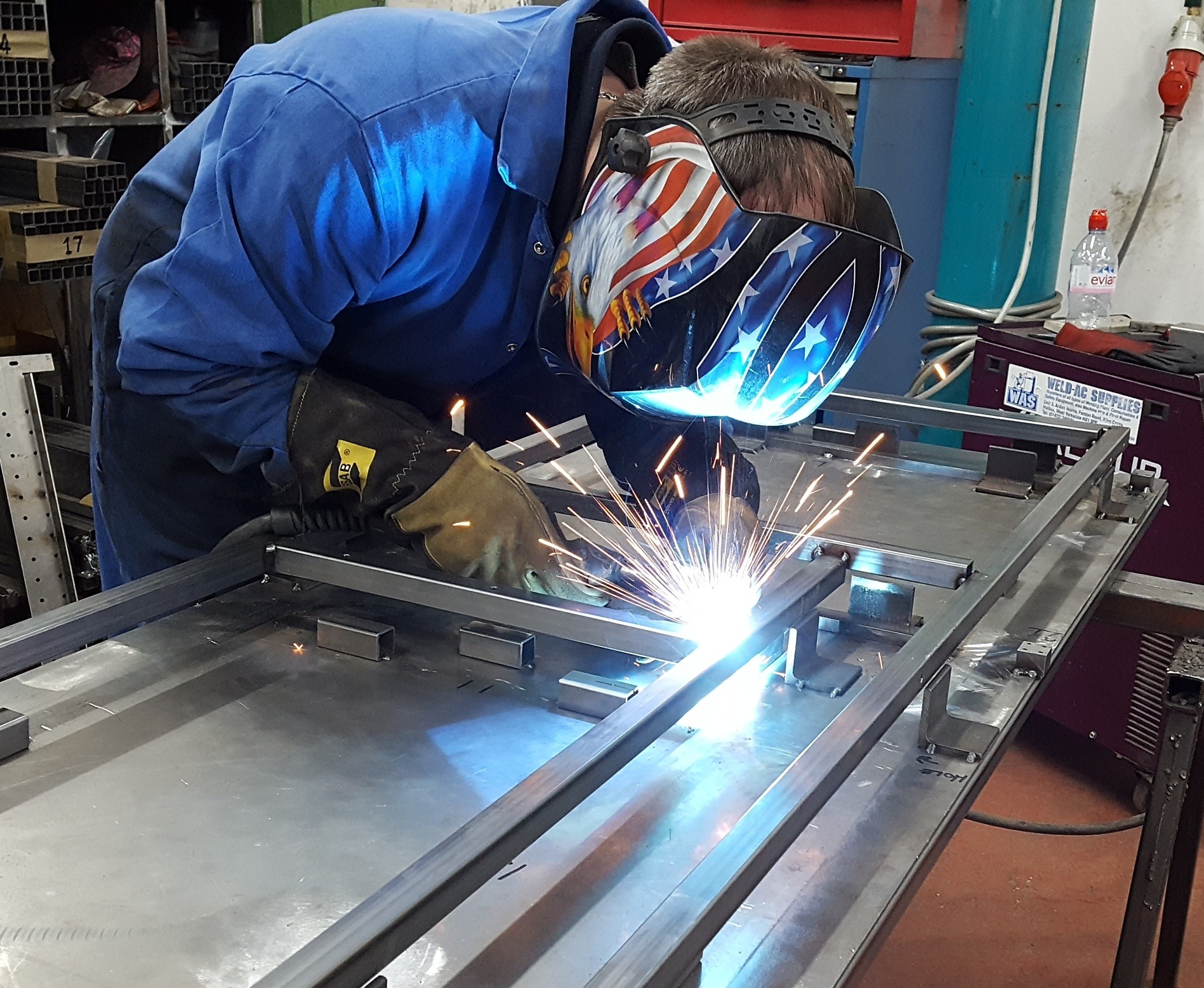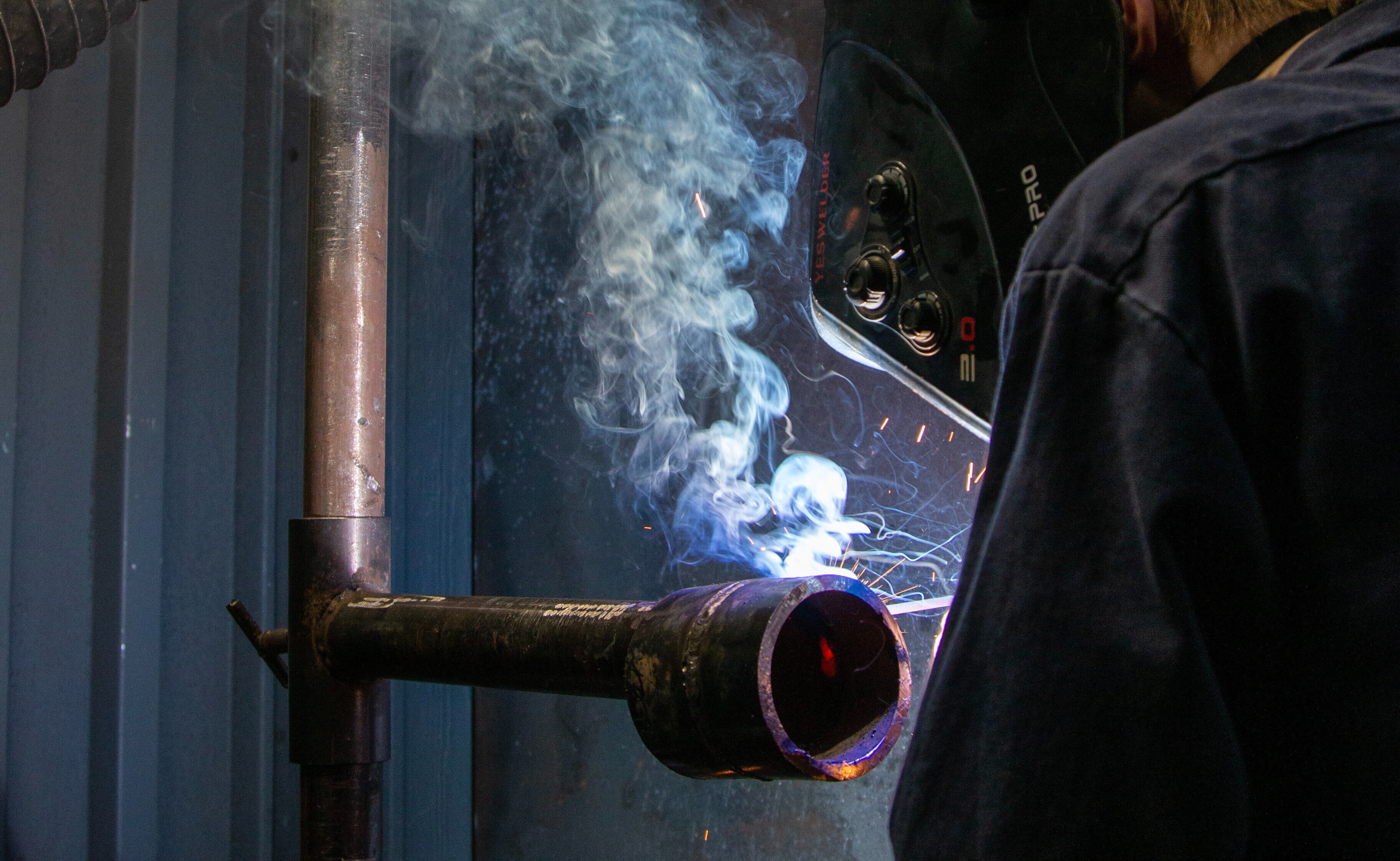Typical Welding Repair Issues and Just How to Address Them Successfully
Welding repairs often come across a series of issues that can threaten the integrity of the final item. Usual problems consist of inadequate infiltration, porosity, and imbalance, among others. Each problem presents one-of-a-kind obstacles that call for details strategies for resolution. Understanding these issues is crucial for welders intending to boost their abilities and end results. This discussion will check out these typical welding repair service concerns and reliable techniques to address them.
Inadequate Infiltration
Inadequate infiltration occurs when the weld metal falls short to completely fuse with the base product, resulting in weak joints and prospective architectural failures. This concern often originates from inadequate warm input, wrong electrode angle, or incorrect welding speed. Welders might experience poor infiltration because of a mistake of the necessary parameters for a specific product density or type. Furthermore, contamination on the base product's surface area can impede reliable bonding, aggravating the problem. To attend to poor penetration, welders need to assure appropriate setups on their equipment and keep a clean work surface area. Regular inspection of welds is recommended to recognize any kind of deficiencies early, permitting for prompt corrections and the avoidance of jeopardized architectural integrity in welded settings up.
Porosity
Porosity is an usual defect in welded joints that shows up as small gas bubbles caught within the weld steel. This defect can jeopardize the integrity of the weld, bring about reduced strength and prospective failing under tension. Montana Mobile Welding and Repair Belgrade. Porosity typically develops from contamination, dampness, or improper welding strategies, which allow gases to get away right into the molten weld swimming pool. To address porosity, welders must assure proper surface area preparation, maintain a clean workplace, and make use of suitable welding specifications. Furthermore, selecting the best filler product and securing gas can reduce gas entrapment. Regular assessment and screening of welds can assist identify porosity early, guaranteeing prompt rehabilitative activities are taken, consequently preserving the quality and dependability of the welded framework
Imbalance
Imbalance in welding can develop from different elements, including incorrect arrangement and thermal expansion. Comprehending the source is essential for efficient resolution. Several adjustment strategies are offered to realign components and guarantee structural integrity.
Causes of Misalignment
Welding misalignment often comes from a variety of underlying problems that can compromise architectural stability. One primary reason is inappropriate fit-up of parts before welding, which can cause gaps and uneven surfaces. Variants in thermal expansion during the welding procedure can also result in distortion, especially if the materials being signed up with have various coefficients of development. Furthermore, insufficient fixturing and clamping may fail to hold elements securely in position, bring about movement throughout welding. Inadequately maintained tools, including welding makers and devices, might present incongruities in the weld grain, further adding to misalignment. Finally, driver error, stemming from not enough training or experience, can likewise play a significant role in developing misaligned welds.
Adjustment Techniques Available
Attending to misalignment properly requires a combination of corrective strategies customized to the details issues at hand. One common technique is using jigs or components to hold elements in the proper setting during welding, making certain constant positioning. Furthermore, pre-heating the products can aid minimize distortion and boost fit-up. For substantial imbalance, mechanical adjustment techniques, such as utilizing hydraulic jacks or clamps, can be utilized to deal with the placement prior to welding. Post-weld heat therapy might also be essential to ease stress and anxieties caused by imbalance. Ultimately, mindful assessment and modification throughout the setup phase can prevent imbalance issues from becoming significant problems, promoting a smoother welding procedure and improving total architectural integrity.
Distortion
Distortion is a typical challenge in welding that can develop from various elements, consisting of irregular heating and air conditioning. Comprehending the reasons for distortion is crucial for carrying out reliable prevention techniques. Resolving this problem not only enhances architectural integrity yet likewise boosts the general quality of the weld.
Reasons for Distortion
When subjected to the extreme warmth of welding, materials usually undertake modifications that can cause distortion. This phenomenon primarily develops from thermal growth and tightening during the welding process. As the weld area warms up, the product expands; upon air conditioning, it contracts, which can develop interior stresses. On top of that, uneven heating across a workpiece can worsen these anxieties, resulting in bending or bending. The kind of material likewise plays a substantial duty; steels with varying thermal conductivity and coefficients of expansion might respond in a different way, leading to unpredictable distortions. Inadequate joint layout and insufficient fixturing can contribute to misalignment throughout welding, enhancing the chance of distortion. Understanding these causes is important for efficient welding repair service and avoidance strategies.
Avoidance Techniques
Reliable prevention strategies for distortion throughout welding focus on managing warm input and ensuring appropriate joint style. Keeping a consistent heat input aids to reduce thermal development and tightening, which can result in distortion. Utilizing strategies such as preheating the workpiece can additionally minimize the temperature slope, promoting uniform heating. Furthermore, picking appropriate joint layouts, such as T-joints or lap joints, can enhance security and lower tension focus. Executing appropriate fixturing to protect the workpieces in position even more aids in preserving positioning throughout the welding process. Staggered welding sequences can distribute warm much more evenly, stopping localized distortion. By applying these approaches, welders can considerably lower the likelihood of distortion and improve the overall high quality of their welds.
Fracturing
Fracturing is a common concern encountered in welding repair services, often resulting from numerous elements such as get more info incorrect cooling prices, product option, or inadequate joint preparation. The occurrence of fractures can substantially endanger the honesty of the weld, resulting in prospective failures throughout operation. To resolve this issue, welders must first analyze the root causes, making certain that products are compatible and properly selected for the specific application. Furthermore, managing the air conditioning rate during the welding procedure is vital; quick air conditioning can induce stress and anxiety and result in cracking. Proper joint style and preparation also add to decreasing the threat. Executing these strategies can enhance weld top quality and durability, eventually reducing the likelihood of breaking in finished weldments.

Insufficient Fusion
A significant concern in welding repairs is incomplete combination, which occurs when the weld steel does not adequately bond with the base material or previous weld passes - Montana Mobile Welding and Repair Fabrication. This defect can bring about weak points in the joint, potentially endangering the stability of the welded framework. Aspects adding to insufficient combination consist of insufficient heat input, improper welding method, and contamination of the surface areas being signed up with. To address this issue properly, welders need to guarantee correct pre-weld cleaning and surface prep work, along with readjust their welding criteria to accomplish sufficient infiltration and combination. Normal assessment throughout the welding procedure can additionally help identify incomplete blend early, permitting prompt rehabilitative measures to enhance the overall top quality of the weld
Overheating
While welding repair work can improve structural honesty, overheating offers a substantial challenge that can result in product deterioration. Too much warmth throughout welding can modify the mechanical properties of steels, causing reduced strength, increased brittleness, and warping. This sensation is especially vital in high-stress applications where structural reliability is critical. Recognizing overheating can entail visual examinations for discoloration or distortion, as well as keeping track of temperature during the welding procedure. To mitigate the threats related to overheating, welders should utilize suitable techniques, such as regulating heat input, changing traveling speed, and making use of appropriate filler products. In addition, implementing pre- and post-weld heat treatments can aid bring back product properties and improve the total top quality of the repair work, guaranteeing long-term efficiency and safety and security.
Frequently Asked Questions
What Are the Usual Indications of a Welding Issue?

How Can I Examine My Welds for Top quality?
To check welds for quality, one can utilize aesthetic assessments, ultrasonic testing, and radiographic methods. Each method assures architectural integrity, determines defects, and verifies adherence to defined criteria, ultimately improving the reliability of the welded joints.
What Security Preventative Measures Should I Take While Welding?
When welding, one ought to prioritize safety and security by wearing suitable individual safety equipment, making certain proper ventilation, protecting combustible materials away, maintaining a tidy work space, and recognizing surroundings to prevent accidents and injuries.
Can I Fix a Weld Without Redesigning the Entire Joint?
Fixing a weld without remodeling the entire joint is feasible, depending on the damage (Belgrade Fabrication). Techniques such as grinding, adding filler material, or utilizing a welding process can effectively deal with specific defects while protecting the surrounding framework
What Equipment Are Essential for Effective Welding Repairs?
Important tools for reliable welding repair services consist of a welding equipment, wire brush, mill, safety equipment, clamps, and filler materials. Each tool plays an essential duty in making certain top quality and safety during the repair process. Porosity usually develops from contamination, wetness, or incorrect welding methods, which enable gases to escape right into the molten weld swimming pool. Improperly kept equipment, consisting of welding machines and devices, might present incongruities in the weld grain, more adding to imbalance. When subjected to the intense warm of welding, products often undertake modifications that can lead to distortion. Breaking is an usual problem encountered in welding repairs, often resulting from different variables such as inappropriate air conditioning rates, product option, or insufficient joint preparation. A significant issue in welding fixings is insufficient fusion, which takes place when the weld metal does not properly bond with the base material or previous weld passes.